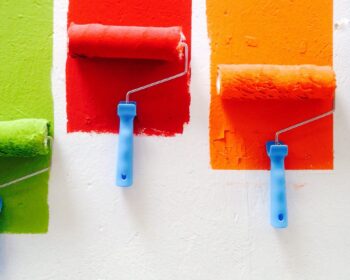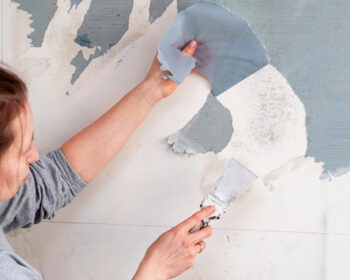
Beginner’s Guide to Buy Sandpaper
Sandpaper isn’t actually sand, and it’s not always paper. The majority of today’s sandpaper is made out of a cloth or paper backing material impregnated with abrasive like aluminum oxide or silicon carbide. Sandpaper is used by both interior and exterior painter for a number of tasks around the house, but it’s most commonly used to clean and smooth wood or metal before finishing or painting.
To successfully use sandpaper, you must first understand how to select the appropriate grit. Sandpaper grits are categorized according to the coarseness of the abrasive particles used. In general, sanding using finer grits until you attain the required level of smoothness is the process of preparing any surface for painting or finishing.
If you use too coarse sandpaper, the surface will be too rough to paint or finish smoothly, and you could sand away delicate detail on a piece of furniture. Sanding with too fine sandpaper will take a lot of time and effort to achieve the required results. As a result, selecting the appropriate sandpaper grits and effectively applying them has become something of an art form. You must find a balance that is neither too coarse nor too delicate.
A gauge number is used to determine the size of sandpaper grit, with lower values indicating greater, coarser grits. #24 or #40-grit sandpaper, for example, is coarse and rough, but #1,000-grit sandpaper is very fine and contains very tiny abrasive particles.
Sandpaper grit numbers are usually always plainly stated on the back of the sandpaper. Grit numbers vary from #24 to #1,000, however most individuals would never use grits at the very top or very bottom of the scale.
Sandpaper with a lower grit number removes wood and other materials more quickly with far less work than finer grit sandpaper. It accomplishes this by cutting the fibers on the surface of the material. When you want to remove a lot of material, produce a rounded edge, or remove old paint or defects, aggressive scratching is the way to go. The coarse sandpaper, on the other hand, produces deep scratches. Very fine sandpaper, on the other hand, removes a very small quantity of material, resulting in a smoother surface. The smoother the surface, the finer the paper. The fear is that if you move to fine paper too soon, you’ll wind up spending a lot of time sanding to achieve the desired results.
Also, sanding wood with too fine a paper or sanding it too much will cause the surface to burnish or shine. This results in overworked regions, which can make it difficult for stains and other finishes to absorb. When stained and finished, overly sanded wood can have a blotchy look. The secret is to start with the highest grit (coarsest sandpaper) that will fulfill your demands fast, then gradually increase the grit (smoother papers) as the surface comes closer to the completed product—and stop when it’s smooth enough for you.
While there are many different grades of sandpaper available, most sanding projects require sheets in the grit ranges listed below:
Ultra-Fine (#320 Grit)
On all sorts of materials, ultra-fine sandpaper grit is used to produce a higher level of smoothness. Ultra-fine grits are typically used to smooth painted surfaces between applications on wood. Wet sanding uses finer grits, resulting in a fine, gritty slurry that compliments the sandpaper’s attempts at smoothing. When sanding down solid surface countertops, #320 grit sandpaper is even used as one of the initial grits.
Fine (#180 – #220 Grit)
Fine-grit sandpaper in this range is generally used for second or third sandings and is rarely utilized on the first run-through unless the surface is already smooth to the touch. Fine-grit sandpaper is sometimes used to roughen glossy paint before applying another layer. Generally, bare wood that will be stained should not be sanded with grits greater than 220-grit. For furniture work, fine or ultra-fine sandpaper grits are employed.
Medium (#100 – #150 Grit)
The medium grit sandpaper gauge is the most often used. It’s difficult to go wrong with sandpaper grits in this range for most purposes. By applying greater pressure to your workpiece, you may work down tough materials. Alternatively, you can preserve fine materials by reducing the pressure. For bare wood surfaces, this grit is commonly utilized.
For painted wood surfaces, a final sanding with 150-grit paper is generally suggested; it leaves a little roughness, or teeth, on the wood surface for the paint to hold onto. It’s always useful to have medium-grit sandpaper on available for any job you’re working on.
Coarse (#60 – #80 Grit)
Sandpaper with these low grit numbers easily slices through old paint and rough edges. It may also shape and round edges by removing enough wood.
Fine details, as well as sharp edges and corners, should not be sanded using coarse-grit sandpaper. Also, use caution while working with veneer plywood since the thin face layers are easily sanded through.





